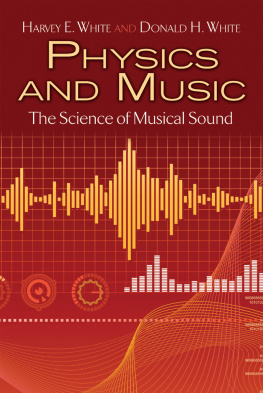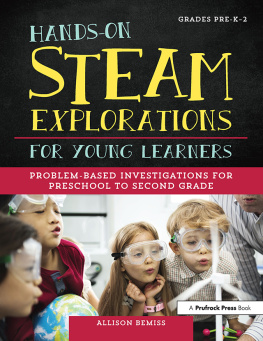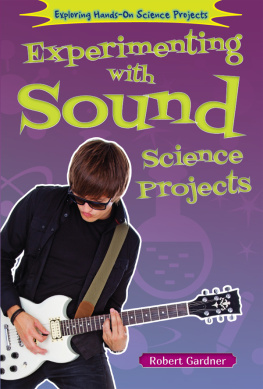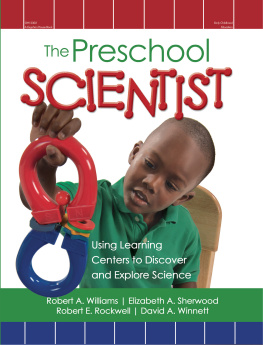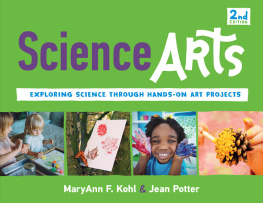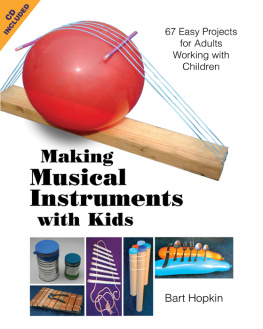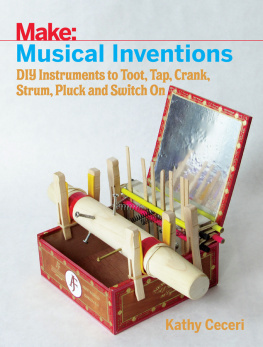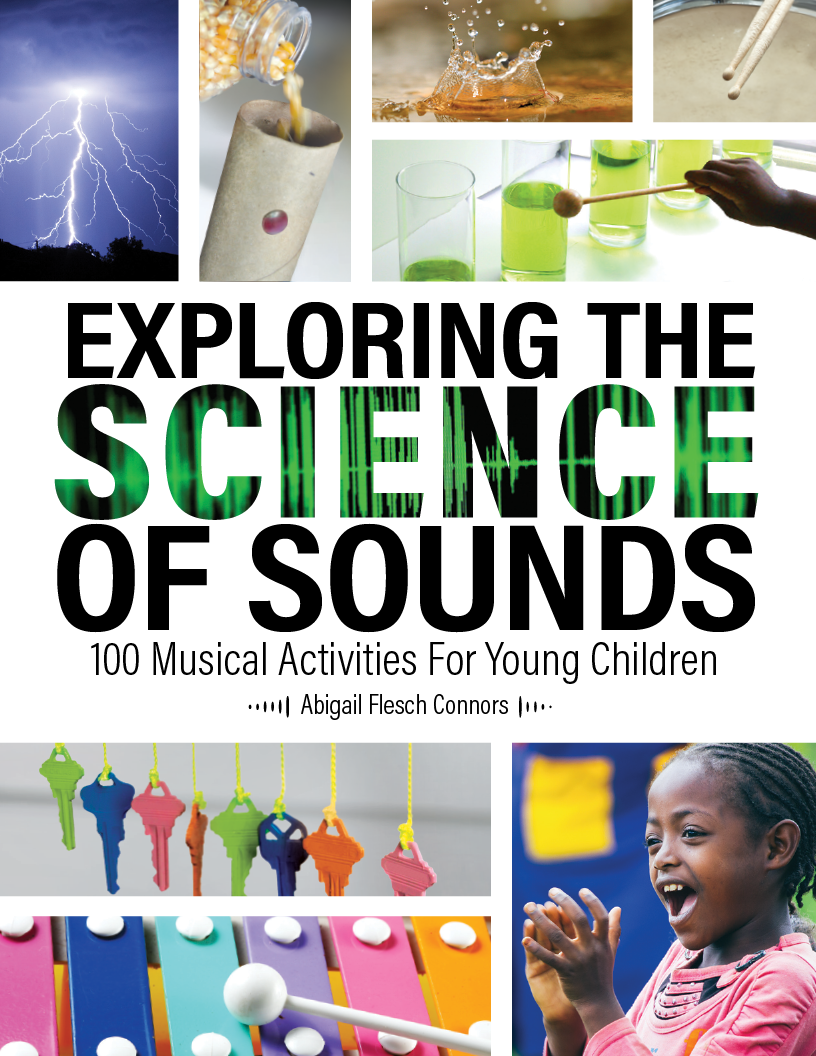Contents

The Sounds
of Our Bodies

How Sound Moves:
The Science of Acoustics

Different Objects, Different Sounds:
The Science of Timbre, or Sound Quality
Loud and Soft Sounds:
THE SCIENCE OF LOUDNESS

Fast and Slow Sounds:
The Science of Speed and Tempo

High and Low Sounds:
The Science of Pitch

Outside Sounds:
The Science of Natural and Environmental Sounds

Creating Musical
Instruments
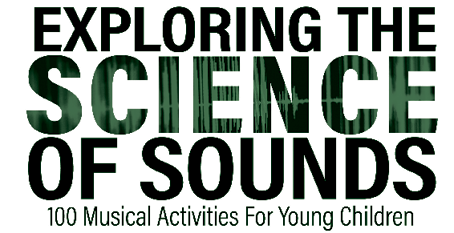
by Abigail Flesch Connors

www.gryphonhouse.com

Copyright 2017 Abigail Connors
Published by Gryphon House, Inc.
P. O. Box 10, Lewisville, NC 27023
800.638.0928; fax 877.638.7576
www.gryphonhouse.com
All rights reserved. No part of this publication may be reproduced or transmitted in any form or by any means, electronic or technical, including photocopy, recording, or any information storage or retrieval system, without prior written permission of the publisher. Printed in the Uninted States. Every effort has been made to locate copyright and permission information.
Photographs courtesy of Shutterstock.
Bulk Purchase
Gryphon House books are available for special premiums and sales promotions as well as for fund-raising use. Special editions or book excerpts also can be created to specifications. For details, call 800.638.0928.
Disclaimer
Gryphon House, Inc., cannot be held responsible for damage, mishap, or injury incurred during the use of or because of activities in this book. Appropriate and reasonable caution and adult supervision of children involved in activities and corresponding to the age and capability of each child involved are recommended at all times. Do not leave children unattended at any time. Observe safety and caution at all times.
Library of Congress Cataloging-in-Publication Data
Names: Connors, Abigail Flesch, 1957- author.
Title: Exploring the science of sounds : 100 musical activities for young
children / by Abigail Flesch Connors.
Description: Lewisville, NC : Gryphon House, Inc., [2017] | Includes
bibliographical references and index. |
Identifiers: LCCN 2017018599 (print) | LCCN 2017023214 (ebook) | ISBN
9780876597323 () | ISBN 9780876597316 (pbk.)
Subjects: LCSH: Sound--Juvenile literature. | Music--Acoustics and
physics--Juvenile literature.
Classification: LCC QC225.5 (ebook) | LCC QC225.5 .C65 2017 (print) | DDC
534.078--dc23
LC record available at https://lccn.loc.gov/2017018599

To Shannon, with love and gratitude

Music is a magical thing. It helps us celebrate our joys and ease our sorrows. It excites us, calms us, and enchants us with its mysterious power.
Music is also science.
I first learned this from my wisest teachersthe young children in my music-enrichment classes.
For instance, in one recent class, I was teaching a group of four-year-olds how to tap and scrape rhythm sticks as a recording of instrumental music played in the background. The children happily tapped and scraped to the beat of the music, but they also asked:
Why do some of the sticks have bumps and some dont?
Why are some sticks red and some sticks blue?
Why is it louder when I play like thisholding the sticks flat on the floorinstead of like this? (holding them in the air).
What would happen if I hit the sticks on the floor as hard as I can? Would they break? This particular question wasnt asked aloud. The child performed this experiment on her own. Fortunately, rhythm sticks are quite sturdy!
So, why were the children asking all these seemingly irrelevant questions? When I was younger, I assumed it was because young children had short attention spans. Years of experience and of exploring what scientists know about how young children learn have changed my opinion. Questions like these arent irrelevanttheyre scientific!
Spoiler alert!
Music activities almost always bring out childrens scientific curiosity. Unfortunately, we rarely take advantage of this opportunity to help them develop scientific thinking. Lets go back to one of these questions. A child asked, Why do some of the sticks have bumps and some dont?
What if I simply told her, We need the bumpy sticks to make the scraping sound. If we had only smooth sticks, we couldnt make that sound. Okay. Thats a true and fairly age-appropriate response. But what just happened?
1.I taught the child a fact (that shell probably forget by tomorrow, anyway).
2.I encouraged her (and the rest of the class) in the common belief among young children that grown-ups know everything.
3.Most troubling, this girl was exhibiting scientific curiosity and I shut it down. Just stopped it in
its tracks.
Why bother thinking, observing, listening, and experimenting, if a quick and easy answer is as close as the nearest adult? Giving a child the answer to a question of that nature is like giving away the ending to a book before someones finished reading it. Have you ever had someone spoil the ending of a book or movie for you? Frustrating, isnt it? It diminishes the exciting experience of wondering what will happen. When we tell children the answer, were spoiling the ending of the scientific story. Were keeping them from making their own discoveries, which is an innately satisfying and rewarding experience. Were depriving them of what the physicist Richard Feynman called the pleasure of finding things out. And its that pleasure, that excitement, that reinforces childrens scientific curiosity.
Young children dont really have short attention spans. Theyre constantly paying attention to everything in their environment. Their brains are processing vast amounts of information, driven by an urgent need to make meaningful connections, to make sense of their environmentof objects, people, sights and sounds, and of their own bodies and identities. Whats more, as Alison Gopnik, Andrew N. Meltzoff, and Patricia K. Kuhl describe in their book The Scientist in the Crib , children are constantly revising their theories of how things work as they perceive new information. As a matter of fact, young children do think a lot like scientists, and meaningful science activities in early childhood build the foundation for future science learning.


